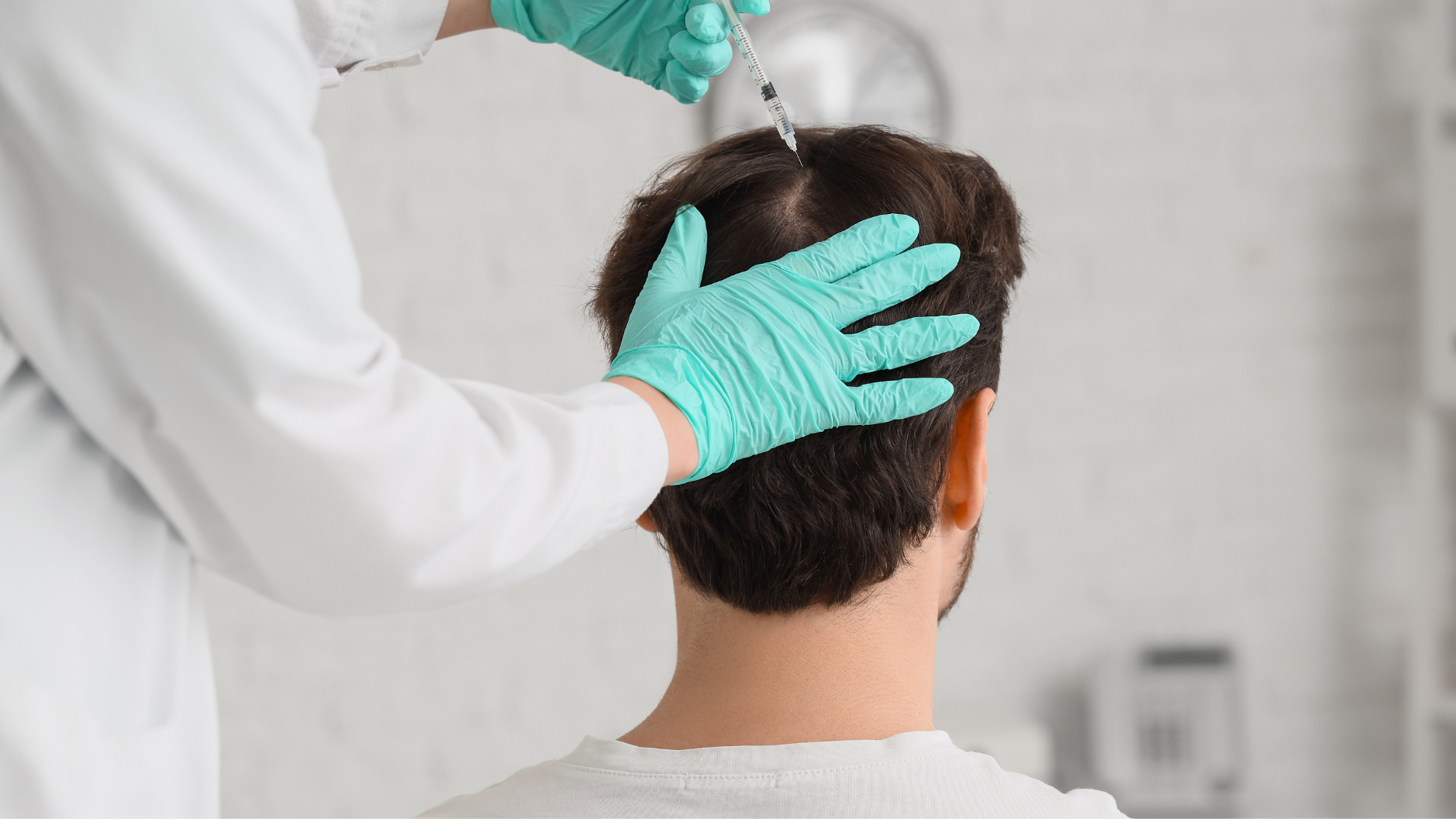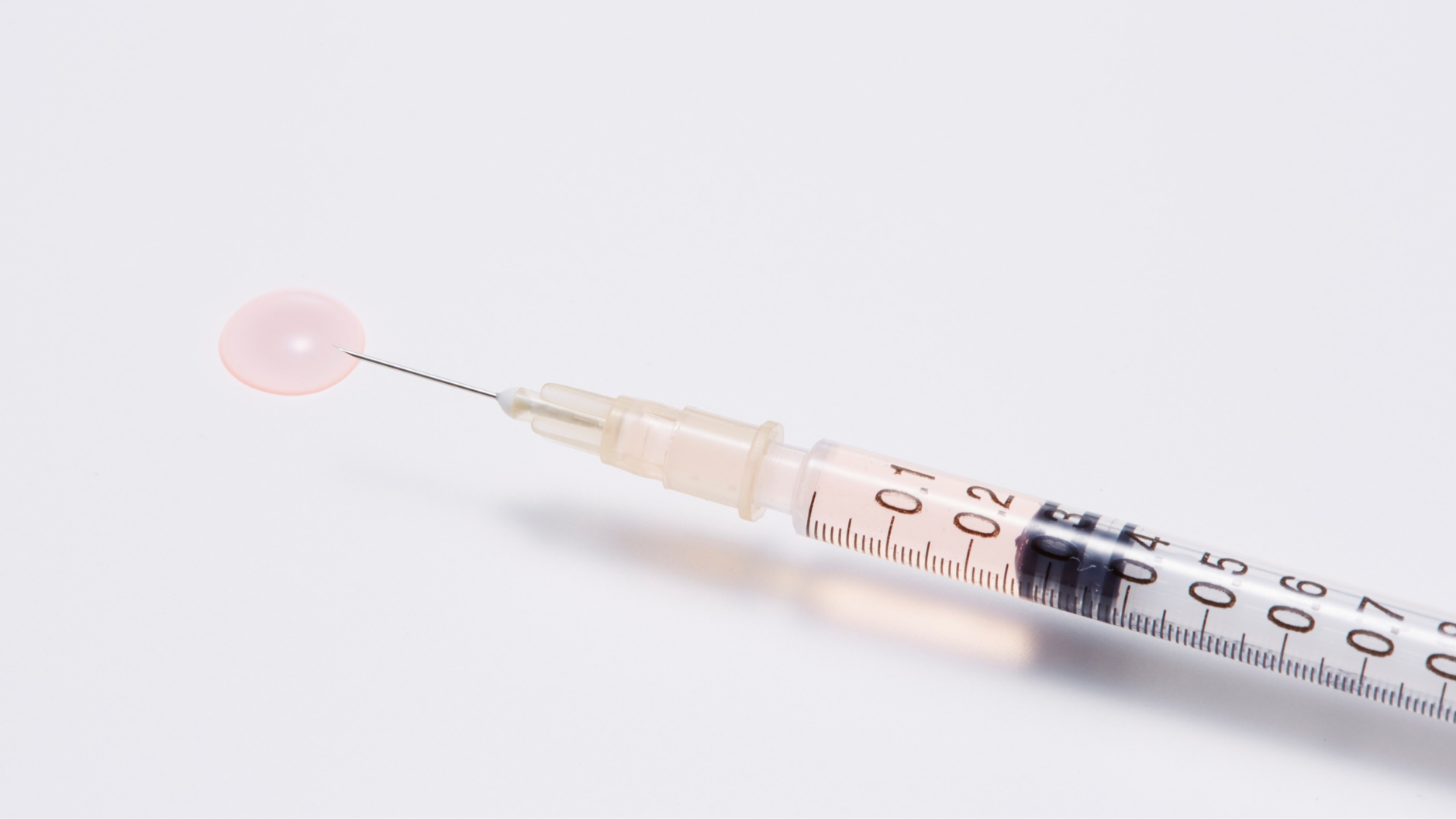Mesotherapy vs. Minoxidil: Are Injections More Effective Than Topical Use?
Minoxidil has long been a first-line treatment for hair loss. First approved for topical use in 1988 for men and 1991 for women, it is licensed in the UK for treating androgenetic alopecia. Available as a lotion or foam, it remains one of the most widely used treatments worldwide. But with injectable mesotherapy gaining ground in clinical settings, many patients now wonder if they should switch, combine, or reconsider their approach altogether.
This article explores how mesotherapy compares to topical minoxidil, what the evidence says, and whether injectable minoxidil or other mesotherapy solutions might be better suited for long-term hair restoration.

How Minoxidil Works
Minoxidil is a vasodilator that widens blood vessels and improves blood flow to the scalp. It may also stimulate potassium channels within the hair follicle, helping prolong the growth (anagen) phase of the hair cycle. Applied daily, it can stabilise hair loss and in some cases promote regrowth. It is most effective in the early to moderate stages of androgenetic alopecia.
However, topical minoxidil has some limitations. Absorption through the scalp is often low, and many users discontinue it due to irritation, contact dermatitis, or lack of visible improvement. Compliance can also be an issue, as the product must be applied consistently once or twice a day for months at a time.
How Injectable Minoxidil Differs
In mesotherapy, minoxidil or dutasteride can be injected directly into the dermis of the scalp. This allows the active ingredient to bypass both the digestive system and the skin’s protective barrier, delivering it closer to the blood vessels that support hair follicles. The concentration used in injections is often lower than topical formulations, but because it reaches the follicle directly, the effect can be stronger and more localised.
Injectable formulations may also include other ingredients, such as peptides, amino acids, caffeine, hyaluronic acid. These combinations can address barrier repair or follicle miniaturisation at the same time as stimulating growth, and in some cases, have demonstrated results comparable to topical minoxidil or oral finasteride.
Practical Differences Between the Two Methods
Topical minoxidil is applied daily by the patient at home. It requires regular use and patience, with most people seeing visible results after three to six months of consistent application. Missed doses or stopping treatment too soon often leads to regression.
Mesotherapy, on the other hand, is performed in-clinic. A course typically involves three to six sessions, initially spaced every two to four weeks. The main advantages are convenience, targeted delivery, and the potential to see faster improvements, often within eight to twelve weeks. Some patients also prefer it because it avoids daily application and may be better tolerated if they have sensitive skin.
That said, mesotherapy usually involves a higher upfront cost, and results still depend on the individual’s diagnosis, scalp condition, and overall health.
What the Research Says
A placebo-controlled clinical study using 0.5 percent minoxidil injections in women with androgenetic alopecia found significant improvements in both hair density and shaft thickness after three months of treatment. The sessions were performed every two weeks, followed by less frequent maintenance.
By comparison, topical minoxidil studies show variable results. Around 40 to 60% of users experience some regrowth, but irritation and poor compliance are common reasons for discontinuation.
While injectable minoxidil is showing promise in early trials, it is not the only mesotherapy option with clinical backing. Formulations containing growth factor peptides, or copper-binding complexes have also demonstrated improvements in hair density and follicle quality. However, it is important to note that mesotherapy is not appropriate for individuals with active inflammatory scalp conditions. Ultimately, the most effective approach involves selecting the right active ingredients based on clinical diagnosis, scalp status, and patient goals.
Does Injectable Minoxidil Have Fewer Side Effects?
One of the concerns with topical minoxidil is systemic absorption. This can lead to side effects such as headaches, dizziness, or increased heart rate. Injectable use may reduce these risks by delivering smaller amounts of the drug directly into the target area.
Patients receiving injectable minoxidil typically report only mild discomfort, temporary redness, or swelling at the injection site. It is generally well tolerated, though as with any procedure, technique and product quality matter.
Can You Combine Both Treatments?
Yes. Many patients begin with topical minoxidil and move on to mesotherapy if they do not see results or cannot tolerate the product. Others use both methods at the same time, especially during the early stages of treatment when building follicular response is the priority.
In clinic settings, it is common to see mesotherapy paired with red light therapy, nutritional correction, or other injectables like PRP or exosomes. The goal is to layer treatments that support both scalp health and hair cycling mechanisms.
Who Is Best Suited to Each Option?
Topical minoxidil may be best for those in the early stages of thinning, with no scalp sensitivity and a preference for home-based treatments. It is also more affordable and widely available.
Mesotherapy is a good option for those who have tried topicals without success, who have sensitive skin, or who are already undergoing investigation for the root cause of their hair loss and want a more advanced protocol. For individuals with androgenetic alopecia who do not tolerate oral medications, a growth factor based mesotherapy formula may be more appropriate than minoxidil alone.
The most effective approach often involves assessing scalp condition, medical history, and treatment goals before selecting the ideal formulation.
FAQs
How many sessions of injectable minoxidil are needed?
Most patients require three to six sessions, spaced every two to four weeks. Maintenance sessions may be advised every three to six months after the initial 'loading' and 'optimisation' phase, depending on response.
Is injectable minoxidil licensed in the UK?
Not at this time. Injectable use is considered off-label, but doctors and prescribing professionals are permitted to use it in clinical settings when supported by evidence and patient consent. For individuals who prefer to avoid prescription medications, there are also growth factor–based mesotherapy formulations that have shown comparable results in clinical studies.
Can I switch from topical to injectable?
Yes. It is possible to stop topical use once mesotherapy begins, you are also able to continue with topical treatments while using mesotherapy.
Are mesotherapy formulas more effective than minoxidil?
In some cases, yes. Formulations that contain dutasteride, biomimmetic peptides, or growth factors may deliver better results than minoxidil alone, particularly in individuals who have not responded well to topical treatments or who require a more targeted approach.
References
-
Uzel BPC, Takano GHS, Chartuni JCN, Cesetti MV, Gavioli CFB, Lemes AM, et al. Intradermal injections with 0.5 percent minoxidil for the treatment of female androgenetic alopecia: a randomized, placebo-controlled trial. Dermatol Ther. 2021;34(1):e14622.
-
Patel DP, Swink SM, Castelo-Soccio L. A review of the use of biotin for hair loss. Skin Appendage Disord. 2017;3(3):166–169.
-
Shome D, Kapoor R, Doshi K, Patel G, Vadera S, Kumar V. Comparison of QR678 and QR678 Neo as monotherapy and in combination with minoxidil and finasteride in male androgenetic alopecia. J Cosmet Dermatol. 2021;20(6):1556–1564.
-
Sobhy N, Aly H, El Shafee A, El Deeb M. Evaluation of the effect of injection of dutasteride as mesotherapeutic tool in treatment of androgenetic alopecia in males. Our Dermatol Online. 2013;4(1):40.




